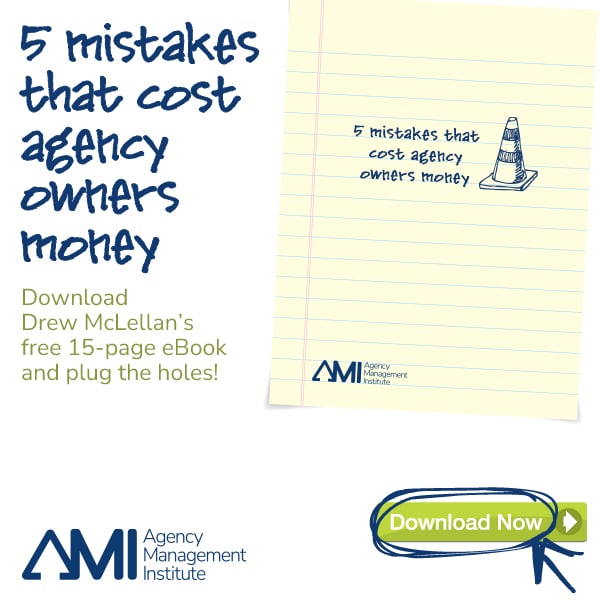Learn

Webinars
On demand webinars on topics that matter to agency owners/leaders. Perfect for lunch and learns and an agency leader’s continuing education.

Online Courses
We’re currently offering two on demand web-based courses: Agency New Business Blueprint and the Account Executive Bootcamp.

Live Workshops
We get incredible accolades for our live two-day workshops for agency owners, leaders and account executives. Come learn with us!
Memberships
Interested in AMI membership but not in a peer group? We’ve got plenty of benefits and discounts for you too!
Free E-Book
Stop giving away your money! Download a copy of AMI’s free 15-page book “5 Mistakes that Cost Agency Owners Money” and start keeping the money you work so hard to earn!








